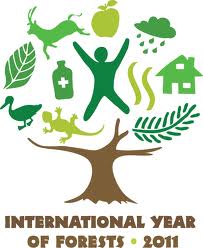
Now that the United Nations has declared 2011 the International Year of Forests, many New7Wonders of Nature finalists, such as the Black Forest and the Amazon Rain Forest, will be feeling very pleased with themselves. They are the most obvious beneficiaries of the UN decision, but the Sundarbans and El Yunque are heavily forested areas, too, and both can expect extra publicity in the New Year because governments and international organizations will be creating awareness of the International Year of Forests.
According to World Bank estimates, more than 1.6 billion people depend on forests for their livelihoods. The forest industry is a source of economic growth and employment, with the value of global forest products traded internationally reckoned to be some $270 billion. The World Bank also says that forests provide habitats to about two-thirds of all species on earth.
The need for such awareness is great because the Food and Agriculture Organization estimates that every year 130,000 km² of the world’s forests are lost due to deforestation. Unsustainable harvesting of timber, bad land management practices and the establishment of human settlements are the main causes of deforestation.

